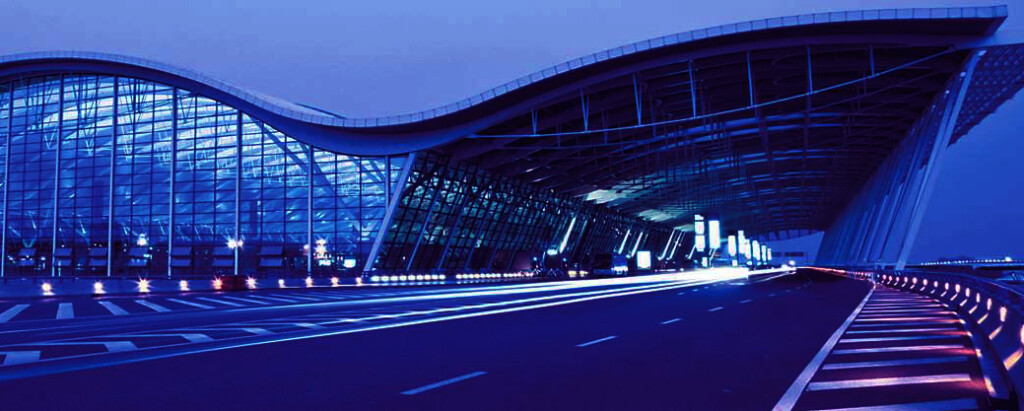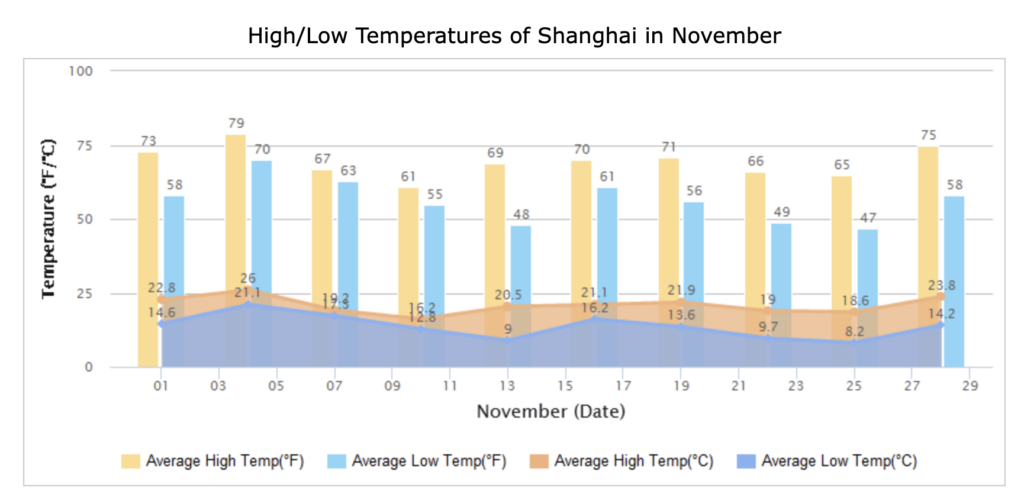Travel Information

GETTING TO AND FROM SHANGHAI
BY AIR
Shanghai is predominantly served by two airports, Pudong International Airport (PVG), which is located about 30 kilometres east of the city centre and offers many flights to major cities around the world, and Hongqiao International Airport (SHA), which is about 13 kilometres west of downtown Shanghai, which handles mainly domestic flights but connects with a limited number of international destinations.

Pudong International Airport.
Passengers can easily travel to and and from the airports using taxis and public transportation, which from Pudong International Airport includes the Airport Shuttle Bus, Metro Line 2, and the fast-speed Maglev Train. Shuttle buses are available for traveling between the two airports.
BY TRAIN
China’s railway network is the largest in the world, and intercity railway lines connect Shanghai with the rest of the country.
There are four railway stations in Shanghai – Shanghai Hongqiao Railway Station, Shanghai Railway Station, Shanghai South Railway Station and Shanghai West Railway Station, with Shanghai Hongqiao Railway Station and Shanghai Railway Station being the most frequently used for high speed trains.
High speed bullet trains can be used travel to Beijing, Nanjing, Suzhou, Hefei, Huangshan and other cities. The trip to Beijing, depending on the particular train, will take between 4.5 and 6 hours.
Foreign visitors can book train tickets online or via a ticket agency, or buy the tickets at the train station with a valid passport. Train ticket changes and cancellations can only be done at ticket counters.

China Railway’s bullet train. (Photo credit: Leon Huang on Pexels.com)
VISAS TO CHINA
Most visitors to China require a visa before traveling. However, passport holders from Austria, Belgium, France, Germany, Hungary, Ireland, Italy, Luxembourg Malaysia, the Netherlands, Spain and Switzerland are eligible for visa-free entry for a period of 15 days. Nontheless, if visitors from these countries intend staying longer than 15 days, it is recommended that they apply for a visa at a Chinese embassy or consulate abroad in advance of travel.
Currently, no one can apply for and get a Chinese Visa just through the Internet. But it is possible for citizens of many countries to complete the application form online in advance, and also book an appointment online for offline submission.
Passport holders from most countries must make the submission directly to a Chinese embassy or consulate. They are recommended to use the COVA (China Visa Online Application) and AVAS (Appointment for Visa Application Submission) systems.
Residents of 46 countries/regions may submit China Visa Application via the CVASC (China Visa Application Service Center).
Applicants must download the application form from the official website, fill in the electronic form and print it out. This needs to be submitted with all other required documents to the consular office of a Chinese embassy or a consulate.
For CIBJO Congress attendees, it is recommended to apply for an “L” type tourist visa. If you are planning to conduct business while in China, you may need to apply for an “M” type commercial visa.
WEATHER
Located on the southeast coastal region of China, Shanghai has a humid subtropical monsoon climate with four distinct seasons. But November is a transitional month, moving from a colourful autumn to a colder winter. Dry northwest winds are common.
Temperatures could range anywhere from 9℃ to 23℃ (48F to 73F), with dramatic variances between night and day. It is suggested that you bring coats, jackets and light sweaters. It is likely to be sunny during the period, although a few rainy days are always possible.

EMERGENCY NUMBERS
POLICE
110
Number for public security services, such as reporting crimes and requesting police assistance. It also provide help in non-criminal situations, such as dealing with lost items, traffic accidents, etc. Service provided in eight languages including English, Japanese, Russian, German, French, Spanish, Arabic and Korean.
FIRE DEPARTMENT
119
The number can be used for fire, disaster relief, emergency rescue and other critical situations. Service can be obtained in English.
AMBULANCE
120
This number is for pre-hospital care, covering on-site first aid, emergency medical treatment in transit, and care-oriented medical services. Patients trasported to hospitals via the 120 services receive priority in receiving medical attention. Service is available in English.

